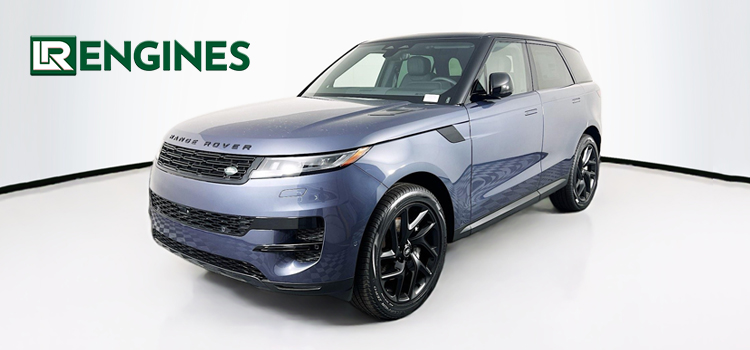What are the Driver Assistance Technologies Supported by the Range Rover 3.0 Engine?

The Range Rover 3.0 is the epitome of luxury and performance that has incorporated the advanced technologies within it to be at the pinnacle in its own regard. In addition to an array of luxurious features, the automobile now boasts several sophisticated driver-assist technologies intended to optimize comfort but goes further into taking the car’s lead into new horizons for safety and convenience. So, here’s a more in-depth look at the driver assistance technologies supported by the Range Rover 3.0 engine.
Adaptive Cruise Control: Comfortable Highway Driving
Adaptive Cruise Control is just one of the high-tech features that have been placed within the new Range Rover 3.0 that will self-regulate its own speed to keep appropriate space from the car it fronted. As it slows down when the traffic gets thinner, it also quickens when the road expands again. Highway driving is made much more comfortable as drivers no longer have to adjust their speeds constantly. Also, ACC boasts Stop & Go, whereby Range Rover can come to complete stop and then resume movement for that extra comfort at the jam.
Blind Spot Monitoring and Assist
Blind Spot Monitoring is one of the functions which makes the driver more aware, as it uses radar sensors in the detection of vehicles beyond the mirrors’ view which are blind spots. As the system in Range Rover 3.0 engine model provides a visual warning at its side mirrors when another vehicle is there in the blind spot, Blind Spot Assist on some Range Rovers proactively steers the car back in to lane when changing lanes could potentially lead to a collision. This thus minimizes the number of accidents that may be caused during a lane change.
Lane Keep Assist, Lane Departure Warning
Lane Keep Assist (LKA) and Lane Departure Warning (LDW) are designed to keep the drivers exactly in the center of their lanes of travel. LDW will alert the driver, visually or audibly, to notify the driver when it can see that the vehicle has wandered unintentionally. Lane Keep Assist will correct steering if a driver does not correct back to the proper lane. Such technologies minimize the chances of drifting out of lane, especially at highways, and are thus very convenient in case of long drives where fatigue may become a frequent companion.
Parking Assistant Technologies
The Range Rover 3.0 has numerous parking aids, one of which is Park Assist, that makes parallel and perpendicular parking much easier by controlling the steering while the driver controls the throttle and brake. It has front and rear parking sensors as well as a Rear Traffic Monitor that warns of oncoming vehicles when reversing out of parking spots. In this way, these features make parking safer and easier, especially in tight urban areas.
Traffic Sign Recognition: Smart Vigilance along the Highway
Traffic Sign Recognition is an intelligent technology where the car uses forward-facing cameras to detect road signs such as speed limits and no-entry signs, showing them on the digital dashboard. It is very helpful to the driver in an unknown place because it makes the driver aware of changes in road conditions and laws related to traffic. This model can even use such information to adjust the speed in line with the limit speed, thus enhancing both safety and compliance.
Emergency Braking and Collision Avoidance Systems
The Emergency Braking system in the Range Rover engine model will detect collision with other road users or pedestrians through cameras and sensors. Once this system identifies a possible collision, it notifies the driver and automatically engages the brakes should the driver fail to do so on time. It generally significantly reduces the possibilities of accidents, especially such environments as urban areas where there are high volumes of pedestrians or highways where sudden brakes may become critical.
Driver Condition Monitor: To be Alert
Driver Condition Monitor is a system to check drowsiness or fatigue of the driver. The system looks at steering patterns and other inputs to determine if the driver is getting tired. If it feels that attentiveness is going down, it sends an alert saying that a break is due. This is very important on long road trips since it prevents accidents caused by driver fatigue, making a journey safer.
Surround-View Camera System for Enhanced Vision
The Surround-View Camera System of the Range Rover 3.0 has a 360-degree view around the vehicle, taking feed from various cameras to give a single view. This is helpful in situational awareness for the driver when moving through difficult spaces or parking. High-definition feed can be provided in split view, giving other angles that improve visibility; nothing should be missed by the driver.
Clear Sight Ground View: Handling Tough Terrains
In other models, which are exclusive to the Land Rover, Clear Sight Ground View allows for a more literal “sight beyond the hood view,” that is, sightly looking ahead and directly to the earth below the hood. With this in mind, an off-road-enthused Range Rover follower’s dreams about spending time way outside the road will be completely achieved only when getting on it becomes indispensable, especially the correct rock or arduous passage of terrain navigating with this feature by taking an open live feed into what would be precisely on top and underneath the automobile.
Choose the Right Driver Assistance Features That Suit Your Needs
Of course, there are many driver assistance options available for the Range Rover 3.0; therefore, you will need to choose the right one suitable for your needs. These might include Adaptive Cruise Control, Traffic Sign Recognition, and Emergency Braking for drivers who spend most of their time driving within urban boundaries.. Some more fun off-road enthusiasts may appreciate the Clear Sight Ground View and the Surround-View Camera. Knowing what these options mean allows you to adjust your experience for the best safety and convenience in your Range Rover.


